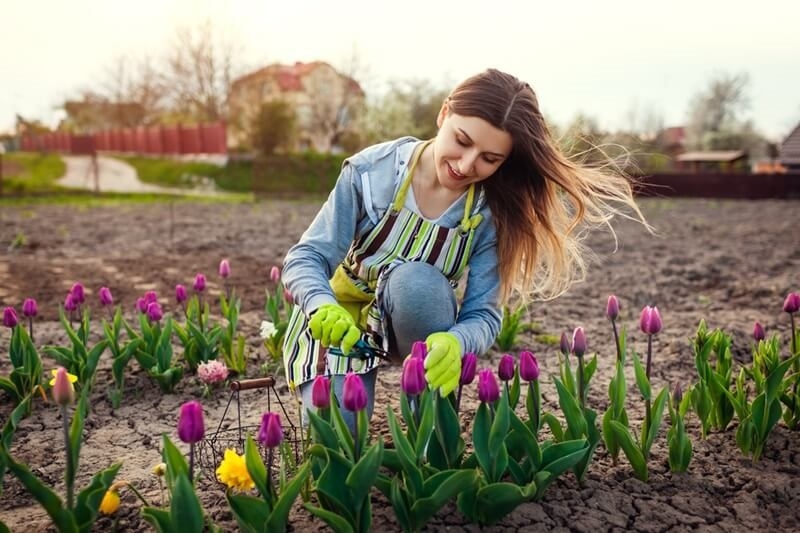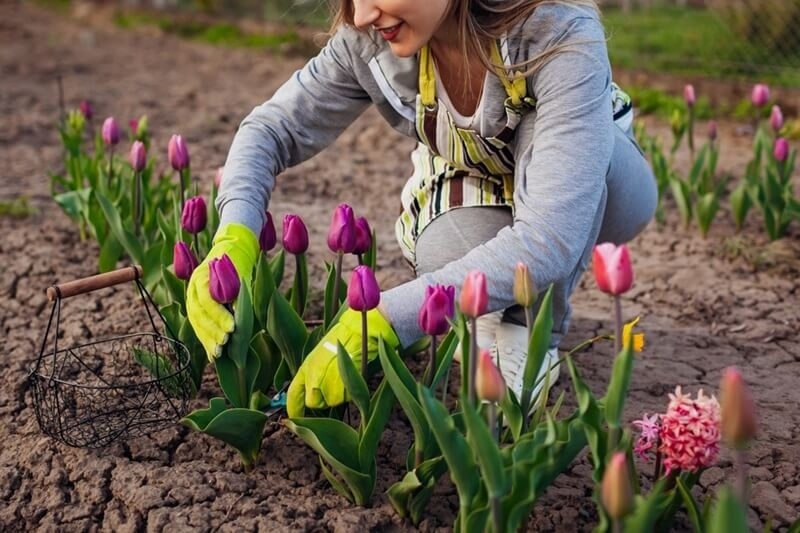
A fresh bouquet can light up any space, but if you buy flowers regularly, you can end up spending a lot of money. This is the reason why many people opt for a cut flower garden in their homes. By growing your own flowers, you will have a steady supply of beautiful and fragrant flowers which can be used for arrangements, gifts, or simply enjoyed indoors. If you have the right plants and take care of them, you can make beautiful bouquets throughout the year.
This blog will lead you through the appropriate flower options, simplified planting methods, and easy tips to keep your garden lush.

Having a garden full of cut flowers is not just about saving money; it's about creating beauty in your living space. It is totally different to use flowers that are grown to be cut compared to regular landscape plants.
One can have a constant supply of flowers that are suitable for both indoors and outdoors by careful planning.
The initial step in making your own cut-flower garden is to select the flowers best suited for the project. Some flowers hold their form for a longer time once in the vase, while others are valuable for texture, scent, or unusual shapes in your bouquets. Regardless of the plants you select, make sure to take into account stem length, blossom duration, and vase life.
Here are the most favored ones:
By combining these flowers, you can make bouquets that will be bright and textured as well as be versatile. Planting a variety of flowers will make sure you always have something to cut and to enjoy in your home.
Taking care of proper spacing, soil, and sunlight will help you keep your garden full of flowers. Most cut flowers love full sun, so choose a place that gets at least six hours of direct light each day.
Annual flowers such as zinnias and sunflowers grow rapidly and yield for months. Perennials like peonies and lilies come back every year, giving you a garden with a lot of lovely long-term. A combination of both keeps your garden full and balanced.
Since you have fresh flowers, the fun only begins. If you know how to do a simple DIY flower arrangement, then a harvest from your own garden can easily turn into one that looks like it was made by a florist, and you don’t need special tools for that, just your creative mind and a few basic principles. Some of the tips will include:
Moreover, you can delight in playing with colors and shapes as well. No two bouquets have to be alike; each one can be a reflection of your personality and the season.
Some flowers decay very fast and wilt within a day, while others can stay fresh for two weeks or more. So if you want to keep the flowers that you cut in a vase for a long time, you should plant those that are long-lasting and are suitable for vase holders.
Here are some of the dependable ones that you can go for:
There are different ways by which you can extend the vase life such as trimming the stems at an angle, changing the water regularly, and keeping the bouquet away from direct sunlight or any heat source. A DIY preservative like sugar and vinegar can also be a help.
The routine of taking care of the garden of cut flowers will determine the duration of the plants’ healthiness. Flowers for cutting should be given concentrated care if fresh blooms are to be obtained consistently.
The principal care that should be given to the garden is:
Gardening is not only about healthy flowers but also a way to extend your harvesting season.
Cut flower garden season planning is a sure way of having flowers throughout the year. Plant the likes of tulips and daffodils in the fall so that they bloom during spring. After that, you can plant zinnias, sunflowers, and cosmos for the summer period. Autumn flowers such as dahlias and chrysanthemums give warm tones to the garden. With proper timing, you can avail of flowers almost every month in your garden.
You can also adopt the method of succession planting, i.e., sowing seeds of a particular plant every few weeks. Hence, flowers will continue to be available in the garden even during the off-season. Besides, even in winter, there are some materials that can be used for arrangements, like evergreen branches and dried seed heads.
While there's nothing more essential than flowers, it's the little things that make bouquets even better. Lavender, rosemary, and mint, for example, not only add scent to your bouquet but also enhance its beauty.
Grasses and seed pods add texture to the flowers. Branches with berries or colorful leaves give a bouquet a seasonal character. You mix these with your best flowers for bouquets and get fresh-looking florist arrangements.
The establishment of a cut flower garden at your home is a double win, both satisfying and practical. Proper plant selection, gentle care, and a pinch of creativity will lead you to an endless supply of fresh and beautiful bouquets that you can have.
Making use of the best flowers for bouquets, concentrating on growing flowers for cutting, and employing simple DIY flower arrangement tips will surely lighten and make this process more enjoyable.
This content was created by AI